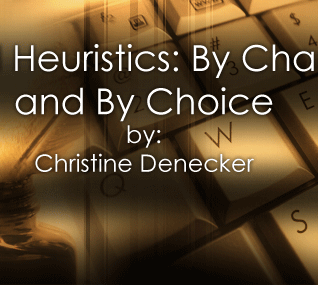


"Now we're getting somewhere!" Unlike my first two forays into digital heuristics, my third inquiry into the strategy was more clearly planned and architectured. An overarching theme of “Literacy, Language, and Learning” provided the context for study in Fall 2009 College Writing II course, and students were required to read, discuss, and write about a variety of articles and texts that defined, debated, and theorized literacy practices. The New London Group’s broad definition of literacy as that which “negotiat[es] a multiplicity of discourses” (2000, p.9; also see Selfe & Hilligoss, 1994; Selfe, 1999; Selfe & Selfe, 2008; Jewitt & Kress, 2003; Daley, 2003; Cope & Kalantizis, 2000) anchored our nascent discourse community, and classroom discussions challenged students to consider questions such as: “What is literacy?” “What does it mean to be literate in the 21st Century?” “What literacies do I possess?” “What literacies must I possess for the career field I plan to enter?” “How does literacy or differing views of literacy impact my community, American society, and the world?” These reading and writing assignments then led to the students’ first formal written assignment: a primary source paper in which they would research a “literacy” of their choice. However, prior to choosing topics, doing research, and conducting interviews for this assignment, the students worked in pairs to create PowerPoint, MovieMaker, or Word Document “montages” of a particular literacy they and their partner possessed. Herein lay the incorporation of the digital heuristic.This concept of a digital “montage” derived from a course reading: Daley’s article, Expanding the Concept of Literacy (2003), a work which argues and defends the value of teaching and promoting multimedia literacy among students. Daley defines multimedia literacy as the “language of the screen” (2003, p. 34), and suggests that “Like text, multimedia can enable us to develop concepts and abstractions, comparisons and metaphors, while at the same time engaging our emotional and aesthetics sensibilities”; furthermore, it affords “tools for enriching, accessing, and transmitting the established literacy” (2003, p. 34). These points speak directly to the value of digital heuristics; therefore, not only did Daley’s points provide a framework for our class discussion on literacy, but they also served to corroborate notions of how digital and multimedia work can enhance knowledge acquisition, creativity, and critical thinking. While Daley goes onto discuss the impact of multimedia literacy with the example of montage, which she says “offers a clear and important example of how differently text and multimedia construct meaning” (2003, p. 35), classroom experience and research have demonstrated that text and multimedia can also complement one another in the construction of meaning. For example, Richard J. Selfe and Cynthia L. Selfe write, “students learn best when they read and compose in multiple ways, when they use multimodalities to identify new and effective forms of literacy” (2008, p. 84) (See similar arguments in the "Heuristics by Chance" section). As such, Daley’s montage discussion prompted my incorporation of a literacy montage (in digital form) as the heuristic for the students’ literacy assignments. Happily, this heuristic served a number of purposes—the most obvious being invention and creation of ideas. However, since the design of the heuristic encouraged literacy exploration through digital means, it also provided students an opportunity to reflect upon their own multimedia literacy skills through the lens provided by the Daley reading. Likewise, further reflection came in a series of questions students responded to after composing and screening the digital literacy montages. These questions, based upon Daley’s assertion that text and multimedia construct meaning “differently” (2003, p. 35), challenged students to consider their own composing practices in each medium. In other words, while this heuristic served as a legitimate “system of investigation” (Crowley & Hawhee, 2003, p. 433), it also allowed for a form of pedagogical scaffolding that moved students from idea creation and exploration to metacognitive gain to critical thinking. Idea creation and exploration began in the form of students’ questioning “what does X literacy look like?” After discussing possible literacies that they and their partner shared, the students did a digital search for visuals that would communicate the various elements of their common literacy. The visuals they chose ranged from the fairly common, such as those needed to define the literacy of a collegiate softball player (softball diamond, pitcher, catcher, “steal” sign, etc.) to the lesser known, such as those necessary for explaining the language of an equestrian studies major (dressage, English, Western, barrel racing, natural training, classical training, etc.). As students explored their “literacies” in this digital fashion, they demonstrated a growing awareness and appreciation of the levels and complexities of literacies from varying discourse communities as theorized in Pierre Walter’s Defining literacy and its consequences in the developing world (1999)—an article they had read for the course. Thus, at the very basic level, the heuristic served to generate ideas as well as to support students’ comprehension of the course texts. |